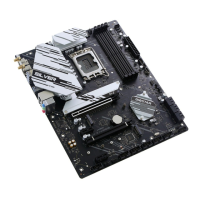
Do you have a question about the Biostar Z790A-SILVER and is the answer not in the manual?
| Processor socket | LGA 1700 |
|---|---|
| Processor manufacturer | Intel |
| Compatible processor series | Intel Celeron, Intel Core i3, Intel Core i5, Intel Core i7, Intel Core i9, Intel Pentium Gold |
| Audio chip | Realtek ALC1220 |
| Component for | PC |
| Motherboard chipset | Intel Z790 |
| Audio output channels | 7.1 channels |
| Motherboard form factor | ATX |
| Windows operating systems supported | Windows 10 x64, Windows 11 x64 |
| Non-ECC | Yes |
| Memory slots type | DIMM |
| Number of memory slots | 4 |
| Supported memory types | DDR5-SDRAM |
| Maximum internal memory | 128 GB |
| Supported memory clock speeds | 5600, 5400, 5200, 5000, 4800 MHz |
| Supported memory clock speed (max) | 7200 MHz |
| Supported memory module capacities | 8GB, 16GB, 32GB |
| Supported storage drive types | HDD & SSD |
| Supported storage drive interfaces | M.2, NVMe, PCI Express 4.0 |
| DirectX version | 12.0 |
| Parallel processing technology support | - |
| USB 2.0 connectors | 2 |
| Number of SATA III connectors | 6 |
| USB 3.2 Gen 1 (3.1 Gen 1) connectors | 1 |
| DisplayPort version | 1.2 |
| USB 2.0 ports quantity | USB 2.0 ports have a data transmission speed of 480 Mbps, and are backwards compatible with USB 1.1 ports. You can connect all kinds of peripheral devices to them. |
| USB 3.2 Gen 2 (3.1 Gen 2) Type-A ports quantity | 5 |
| LAN controller | Realtek RTL8125B |
| Cables included | SATA |
| Depth | 244 mm |
|---|---|
| Width | 305 mm |
Prepare a safe and stable working environment and follow essential precautions before installation.
Check the included accessories and components in the motherboard package.
Detailed technical specifications for the motherboard, including CPU, memory, storage, and ports.
Description of all connectors and ports available on the motherboard's rear I/O panel.
Diagram illustrating the layout and location of all major components and connectors on the motherboard.
Detailed instructions for safely installing the Central Processing Unit (CPU) onto the motherboard socket.
Guide on correctly installing the heatsink assembly and connecting the CPU fan for proper cooling.
Instructions for connecting CPU and system fans to the appropriate headers on the motherboard.
Step-by-step guide for installing DDR5 memory modules into the motherboard DIMM slots.
Information on the available expansion slots, including PCIe Gen5, Gen4, and Gen3 specifications.
Explanation of M.2 slot types, supported modules, and sharing status with SATA connectors.
Instructions on setting jumpers, including the Clear CMOS jumper for system configuration.
Guide to various internal headers and connectors, including power, USB, audio, and fan headers.
Information on front panel headers for power, reset, LEDs, speaker, and trusted platform module.
Description of Serial ATA (SATA) 6.0 Gb/s connectors and their usage for storage devices.
Guidance on connecting front panel USB 3.2 (Gen1, Gen2, Type-C) and USB 2.0 headers.
Information on Thunderbolt header and front panel audio header connections for audio I/O.
Details on the COM1 serial port header and RGB LED headers (12V and 5V).
Explanation of the Debug LED indicators and their meaning for system status and troubleshooting.
Instructions on how to access and navigate the UEFI BIOS Setup program for system configuration.
Overview of the available methods for updating the motherboard's BIOS, including utilities and online updates.
Step-by-step guide for updating the motherboard BIOS using a USB drive and the SMART BIOS UPDATE button.
Instructions on how to back up the current BIOS settings to a file for safekeeping.
Guide for installing motherboard drivers and bundled software from the setup DVD.
Using the BIOScreen utility to personalize the system's boot logo with custom images.
Introduction to the Silver Lightning utility, a suite for system information and configuration.
How to view basic system information such as clocks, motherboard, processor, and memory details.
Using SmartEAR to control system volume and adjust headphone impedance for optimal audio.
Utilizing GT Touch to select between Normal, ECO, and Sport modes for system performance.
Customizing RGB LED lighting effects, colors, and brightness using the Vivid LED DJ utility.
Adjusting LED colors using the color palette and controlling brightness with the LED brightness bar.
Selecting various LED sparkle effects like Shine, Breath, Meteor, and Rainbow for customization.
Using AI Fan utility to customize fan operating modes based on temperature for optimal cooling.
Monitoring hardware voltage, fan speed, and temperature through the H/W Monitor tab.
Adjusting overclocking (OC) and over voltage (OV) settings, and managing profiles.
Displaying version information and details about the Silver Lightning Utility.
Guide to installing motherboard drivers and software using the setup DVD and its interface.
Interpreting AMI BIOS beep codes to diagnose hardware issues during boot.
Understanding AMI BIOS post codes for detailed hardware initialization status and error detection.
Steps to diagnose and resolve CPU overheating issues, including cooler and fan checks.
Explanation of RAID functions (RAID 0, 1, 10, 5) including definitions, features, benefits, and drawbacks.
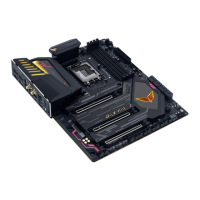

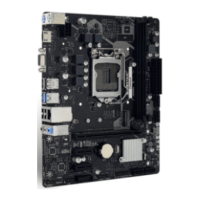
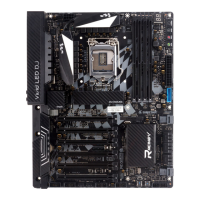
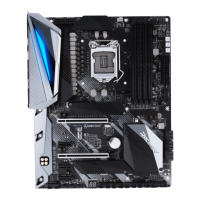

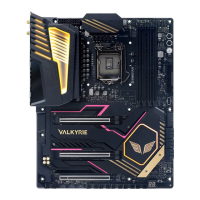

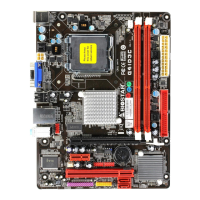
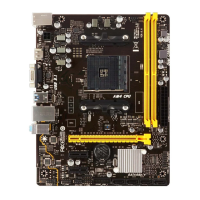
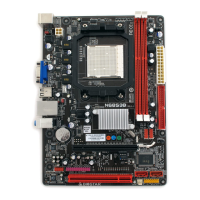
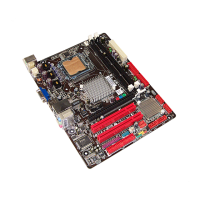
